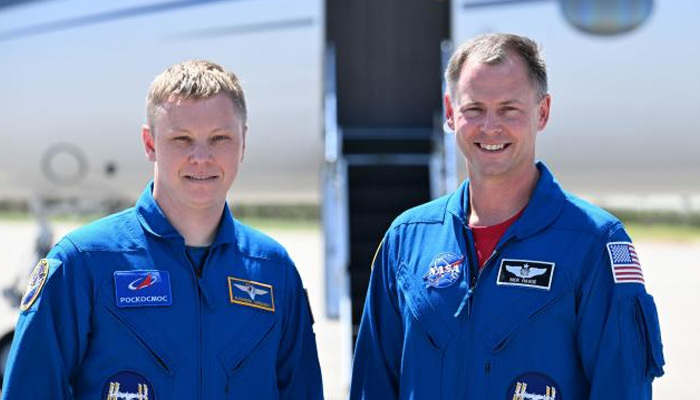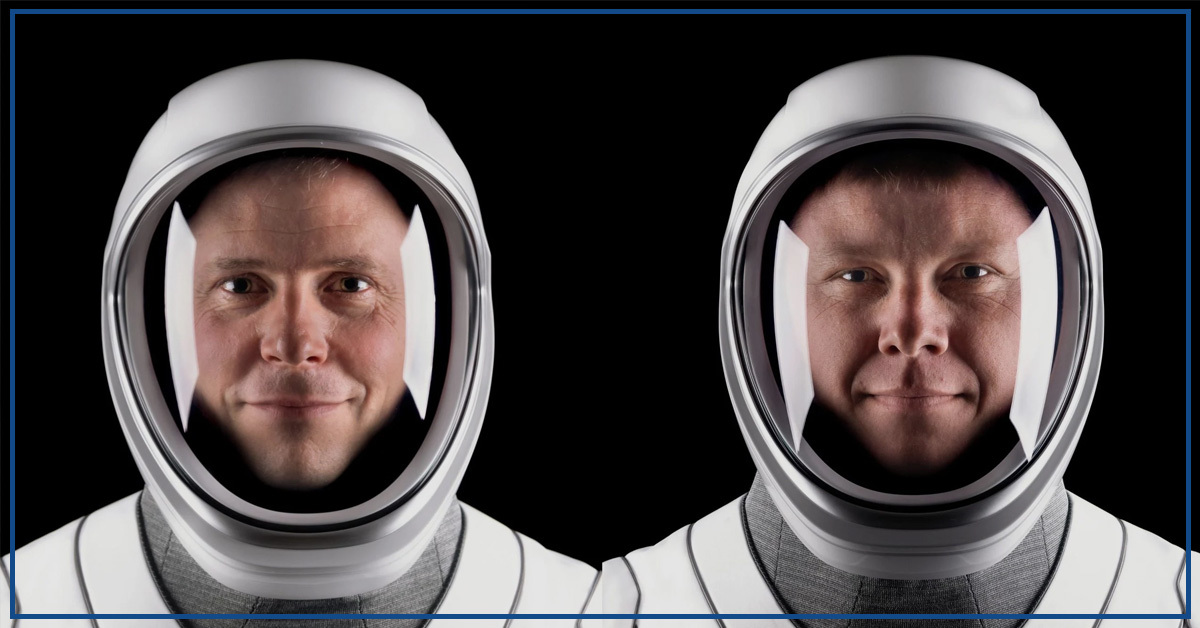Astronauts Nick Hague and Aleksandr Gorbunov are preparing for NASA’s SpaceX Crew-9 mission to the International Space Station (ISS), where they will join Expedition 72. Their mission will involve a variety of activities, including scientific research, technology demonstrations, and experiments focused on future human exploration beyond Earth’s orbit, as well as enhancing life on our planet. Crew-9 will also facilitate the docking of additional spacecraft and deliver over 200 scientific studies and demonstrations.

Scheduled for launch at 1:17 p.m. EDT on Saturday, September 28, this mission marks the ninth crew rotation under NASA’s Commercial Crew Program with SpaceX. Hague and Gorbunov will ascend aboard the SpaceX Dragon spacecraft, which has previously been used for NASA’s Crew-4 and Axiom Missions, departing from Launch Complex 40 at Cape Canaveral Space Force Station in Florida.
Once they arrive at the ISS, Hague and Gorbunov will integrate into Expedition 72, working alongside other astronauts and cosmonauts, including NASA’s Don Pettit, Butch Wilmore, and Suni Williams, as well as Roscosmos cosmonauts Alexey Ovchinin and Ivan Vagner. Hague and Gorbunov are scheduled to return to Earth in February 2025, along with Wilmore and Williams, who launched earlier this year.
Preparations for the launch are progressing, focusing on the integration of the spacecraft with the SpaceX Falcon 9 rocket. Teams are conducting checks on the rocket booster and will perform a dry dress rehearsal and a static fire test before launch.
Nick Hague will command Crew-9, marking his third spaceflight and second mission to the ISS. He previously experienced a rocket failure during his first launch in 2018 but completed a mission aboard Soyuz MS-12. Over his career, Hague has spent 203 days in space and conducted three spacewalks.
Aleksandr Gorbunov, a Roscosmos cosmonaut, will embark on his first trip to the ISS as a mission specialist. With a background in spacecraft and aircraft engineering, Gorbunov previously worked as an engineer for Rocket Space Corp. Energia.
After liftoff, the Dragon spacecraft will accelerate to approximately 17,500 mph to dock with the ISS. Flight control teams will oversee the automatic docking maneuvers, although the crew has the option to manually control the spacecraft if necessary. Once docked, Hague and Gorbunov will participate in a handover with the departing Crew-8 astronauts before they return to Earth.
Crew-9 will engage in various scientific experiments aimed at preparing for human exploration beyond low Earth orbit while also benefiting life on Earth. Their studies will include examining flame behavior in space, investigating cellular changes during long-duration missions, and exploring the potential of a B vitamin to reduce Spaceflight-Associated Neuro-ocular Syndrome. The mission will also involve experiments pertinent to Earth, such as studying the physics of supernovae and monitoring plant growth conditions in space.
During their time at the ISS, Crew-9 will welcome additional Dragon spacecraft and cargo deliveries from Roscosmos. In February, the crew will autonomously undock and return to Earth, with recovery operations planned off the Florida coast.





